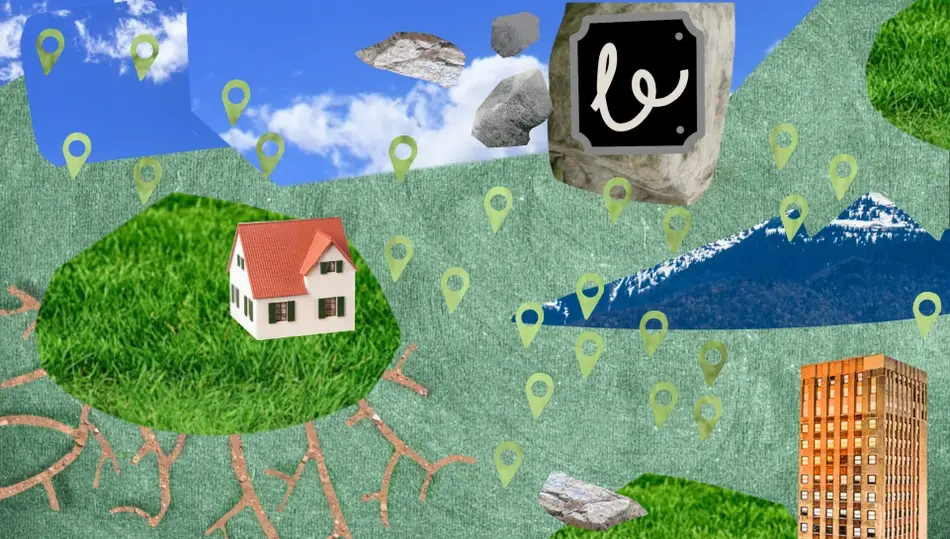How to Uplift Indigenous Groups Beyond Land Acknowledgement Statements

Land acknowledgment statements recognize Indigenous peoples as the original stewards of the land, but real accountability requires taking action. How do you think we can best support Indigenous communities in the social-impact sector? Let us know in the comments!
***
Land acknowledgement statements, which recognize that an event is taking place or an organization is operating on Indigenous land, are increasingly popular gestures in the social-impact sector, but they’re only one step toward reckoning with what it means to live and work on Indigenous territory with Indigenous tribes.
In fact, doing a land acknowledgement can sometimes offer well-meaning speakers an easy way out of true accountability. While a nice gesture, these statements rarely offer an insight into how an organizer or nonprofit is changing the status quo to honor and work with Indigenous tribes in their communities.
So, how can you support Indigenous communities and causes as a non-Indigenous ally? Include specific actions that your audience (and your organization!) can take to build lasting partnerships with Indigenous groups. Here’s how:
What is a land acknowledgement statement?
A land acknowledgement is a formal statement that recognizes and respects Indigenous peoples as the original stewards of the land, and they serve multiple purposes, such as showing respect for the original inhabitants of the land, recognizing the ongoing relationship between Indigenous communities and their environments, and supporting larger efforts toward reconciliation with Indigenous nations.
The specific wording of a land acknowledgement statement will change based on factors like the physical location, the speaker or writer’s relationship to local Indigenous communities, and the audience. Since your statement should include specific reflections and goals, there’s no broad formula or template that works for everyone.
The U.S. Department of Arts and Culture, an independent nongovernmental agency, has a land acknowledgement guide for United States residents including customizable resources. Examples from other performers or organizations might also serve as jumping-off points for your own acknowledgement.
Statements can begin simply, saying something like:
- “I want to acknowledge that we’re on the traditional territory of [INDIGENOUS NATION NAME(S)].”
- “This event is taking place on traditional [INDIGENOUS NATION NAME(S)]. land.”
- “We want to honor the [INDIGENOUS NATION NAME(S)] tribe(s), the original inhabitants of this land.”
Written statements may add a phonetic pronunciation of the Indigenous nations’ names. If your research reveals more than one tribe is indigenous to the land, include all tribal names.
Going beyond land acknowledgement statements
Connecting a native land acknowledgement statement to contemporary events is a good way to alert your audience to how Indigenous groups are connected to efforts within social justice. These events can range from the way your local school system teaches Indigenous history, to challenges that disproportionately affect Indigenous people, to the environmental activism of Indigenous nations in the area.
Sometimes non-Indigenous people don’t realize Indigenous activism is taking place around them—like a campaign to remove a racist mascot or a plan to preserve local environmental resources—until this activism makes the news. But in fact, Indigenous communities do plenty of work behind the scenes to make these changes happen.
Start out by researching some basics:
- Which Indigenous nation is closest to where I live or work? Who are their leaders, and what are their values? You can look in the National Congress of American Indians’ directory to find local nations or tribes.
- Are there active Indigenous-led nonprofits in my area? What are their goals, and what projects are they working on?
- Are there Indigenous-owned businesses in my area or online that I can support?
- Are there local groups of non-Indigenous allies already taking action?
Nonprofit leaders at the Henry Luce Foundation suggest asking these three questions to generate ideas: “What work is being done now in Indian Country? What do current leaders feel they need to do their work[?]; and what infrastructure is in place to identify leaders who need support and to get that support into their hands?”
Tribal or organizational websites may help answer these questions for you by posting possible ways to get involved—from simple tasks like sharing their content on social media to longer-term commitments like volunteering.
Other ways to support Indigenous tribal sovereignty might include:
- Honor tax or voluntary land tax programs, where participants pay a monthly tax to Indigenous nations/organizations for land use. This tax gives direct funding to Indigenous groups and recognizes them as the original owners of the land.
- Voting for officials and initiatives who support Indigenous priorities in federal, state, and local elections.
- Contributing to ecological or climate action, an area where Indigenous communities around the world often focus their activism. To learn about specific goals and campaigns, check out the Indigenous Environmental Network, the Native American Land Conservancy, or Survival International.
Establishing partnerships with Indigenous groups
Building stronger relationships with the Indigenous nations in your acknowledgement can be a long-term goal. You can start simply by prioritizing diversity in your hiring. If you work with artists, entrepreneurs, and service providers, make an effort to hire BIPOC or Indigenous professionals.
On an organizational level, one step toward partnerships is increasing Indigenous peoples’ presence in decision-making roles, as board members or executive-level staff.
A perspective shift may also be required. Philanthropy in the United States is built on wealth, and that wealth often comes from generations of colonialism and exploitation. Even if funders and organizations have good intentions, they’re still passing down this legacy. When working with Indigenous leaders and Indigenous nonprofits, non-Indigenous people should keep this context in mind.
Just as important, acknowledge that Indigenous people are the experts on what their communities need. The goal is community-led leadership and collaboration.
You could offer grant funding or a marketing initiative, for example, but an Indigenous group might need a more practical form of support—such as child care for employees and volunteers, conference space for an event, or website development. Let the group’s leaders tell you what resources would be most helpful.
Building trust in partnerships may involve:
- Seeing yourself as a cultural learner, rather than an expert.
- Putting in the time to get to know Indigenous people and groups, and not expecting fast resolutions.
- Basing partnerships on mutual values.
- Traveling to Indigenous communities and spending time there as a guest.
- Providing support for Indigenous-led solutions.
- Communicating honestly and respecting different communication styles.
- Remembering Indigenous nations are not a monolith; there are more than 500 federally recognized tribes in the United States alone, and each nation will have its own needs and approach.
While listening and learning are important, non-Indigenous people can also educate themselves without relying on Indigenous partners to do all the work. Native Americans in Philanthropy, a network of Indigenous and non-Indigenous nonprofits working to advance Indigenous causes, has an informative “Native 101” website for this exact reason.
Ultimately, partnering with Indigenous nations in nonprofit work may influence your own view of philanthropy—you may move toward a more community-oriented, relationship-centered approach, one that considers both the past and the future.
Amy Bergen is a writer based in Portland, Maine. She has experience in the social impact space in Baltimore, Maryland, the educational museum sphere in Columbus, Ohio, and the literary world of New York City.






